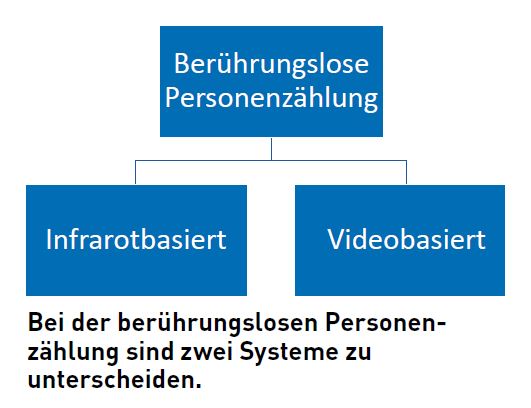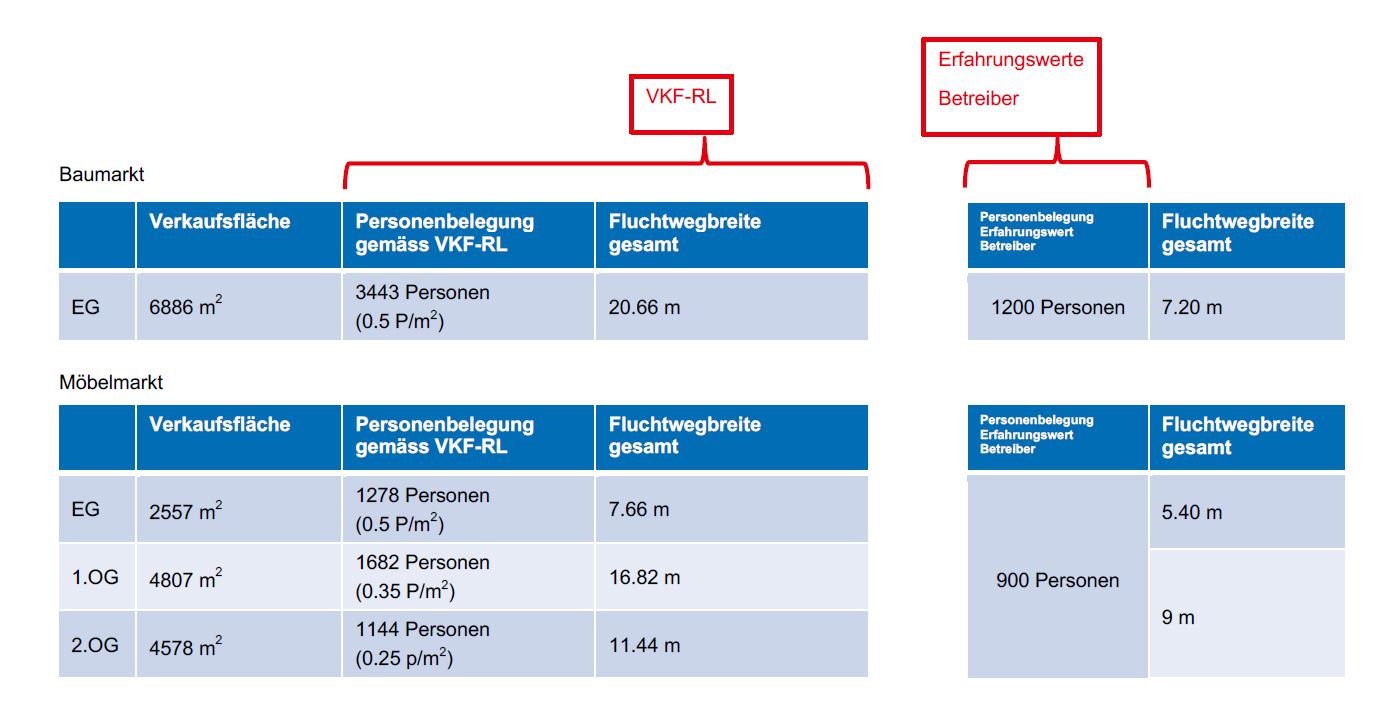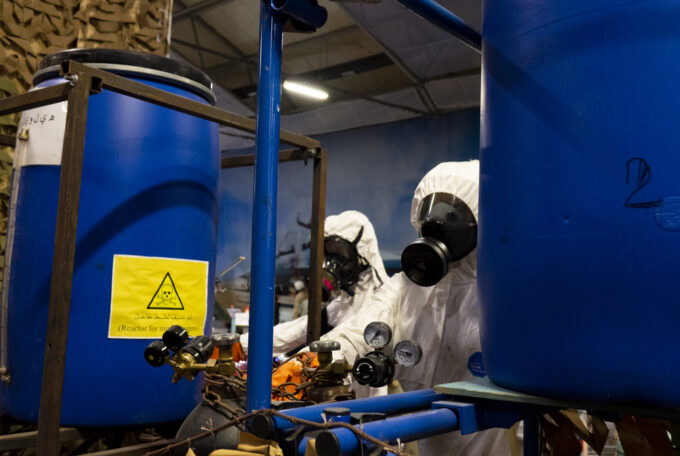Contactless people counting
The maximum number of persons in a building or room is a much-discussed topic. In prescriptive fire protection, the number of exits and the escape route widths ultimately depend on the occupancy. Thus, they have a direct impact on architectural features and construction costs. For example, people counting can be done with a non-contact system - such as a video-based solution.

The table in Section 3.5.2 of the Annex to the Fire Protection Guideline on Escape and Rescue Routes 16-15de is still the benchmark for determining the maximum number of persons. There, a person occupancy per square meter is specified depending on the use. Other literature sources also almost exclusively use the factor of persons per square meter, although this is always the assumption of the worst-credible scenario. The values can therefore be assumed to be conservative and are intended to cover the "worst case" with the worst and therefore highest possible person occupancy for the use, for example for retail stores the annual "Black Friday".
Prescriptive specifications versus practical experience
These prescriptive specifications within the framework of the fire protection guideline are seen from a different perspective at the latest when they are compared with empirical values, for example, from retail traders. The empirical values from practice with regard to the maximum person occupancy per square meter are often several factors lower than the specifications of the fire protection guideline. Table 1 lists empirical values for a DIY store and a furniture store.
Alternatives to the prescriptive approach
Ultimately, it is not decisive for the fulfillment of the protection goal of personal safety with regard to the number of exits and total escape route widths whether, for example, the prescriptive specifications of a maximum of four persons per square meter are achieved in discotheques or whether there are only three persons per square meter. Rather, the decisive factor is that the maximum occupancy for which the use is designed in terms of number of exits and total escape route widths is not exceeded under any circumstances. This can be done by simply counting and limiting the occupancy of persons for the use. Now, the reader may think of the muscular bouncer who counts coming and going guests by hand all night long in the example of a discotheque. This variant alone cannot fulfill the protection goal due to the susceptibility to errors. Another possibility, for example in the case of a swimming pool, is the classic turnstile, which fulfills the requirement of counting and limiting people. However, in the case of a discotheque or a sales outlet, the turnstile can no longer be used, since the customer should be guaranteed the smoothest possible entry and exit without obstacles and constrictions.
Contactless people counting
To enable obstacle-free people counting, the solution of contactless people counting can be chosen. In this case, the people entering and leaving are counted optically without contact. In these cases, the actual limitation of persons when a maximum value is reached must be done organizationally. Basically, there are two different systems for non-contact people counting:
Infrared-based people counting: This option is based on a camera system that can count heat sources and thus people in the infrared range. Compared to the video-based system, this system is less complex, has been tested on the market for longer, and is less expensive. Due to the pure counting of heat sources, it offers the advantage that data protection is not in the foreground. However, this is also the disadvantage of the system at the same time, because the limited information of the number of heat sources does not allow a further use of the system outside the counting of persons.
Video-based people counting: This variant is based on real-time evaluation of a high-resolution video image by an algorithm that can distinguish people entering and leaving from the surrounding image, such as objects. Compared to the infrared-based system, the system is more complex and thus more cost-intensive. The advantage with this system is the extended range of applications. The algorithm can also be used to detect vandalism, theft and fire incidents. However, the use of a high-resolution video signal makes data protection correspondingly more costly.
Requirements for the systems
In addition to the general advantages and disadvantages, both systems for people counting must basically meet the following minimum requirements:
- Measurement must be in real time.
- The people count must be accurate to +/- a few people.
- Pre-warning thresholds must be defined before the maximum occupancy is reached.
- Fallback levels must be available for a possible system failure (e.g., manual counting during an outage).
- System access for settings must be regulated. Under no circumstances may system parameters, such as prewarning thresholds or measurement accuracy, be changed.
Function test
Like all other safety-relevant systems, video-based people counting systems must also be subjected to a function test or be part of the integral test. Now, however, the question arises, especially for the person responsible for quality assurance in fire protection, as to what a correct function test should look like. In the case of a use or a room with a person count for 30 persons, this may still be possible by the persons present during the acceptance tests within the framework of a function test or integral test by "trying out" 30 persons entering. However, at the latest for larger uses or rooms with, for example, 900 people, the question arises as to how this can be tested, since the required number of people is probably not available here. At this point, the only possibility will probably remain to leave the use or room with a smaller group of people at a non-monitored exit (e.g. escape route) and then to re-enter the use or room via the regular access until the corresponding prewarning threshold is reached.
Conclusion
In addition to the prescriptive requirements of the fire protection guideline, contactless people counting systems represent a further possibility of adapting the necessary exits and total escape route widths more flexibly, but at the same time in accordance with the protection objective, to empirical values of the operators with regard to the occupancy of people. Overall, this presupposes that corresponding organizational measures for limiting the number of persons are also effective.
Since the use of non-contact people counting systems is currently based solely on Art. 11 of the fire protection standard, it would be desirable for people counting systems to be included there with the revision of the 2026 fire protection directive.

Florian Zimmermann
Deputy Head of Fire Protection at Swiss Safety Center AG, MSc. Engineer Safety and Security University Magdeburg, Fire Protection Expert VKF, Member Guideline Commission CFPA-Europe as well as Working Group "MAS Fire Safety Engineering" SFPE Switzerland and Safety Consultant SSI.









